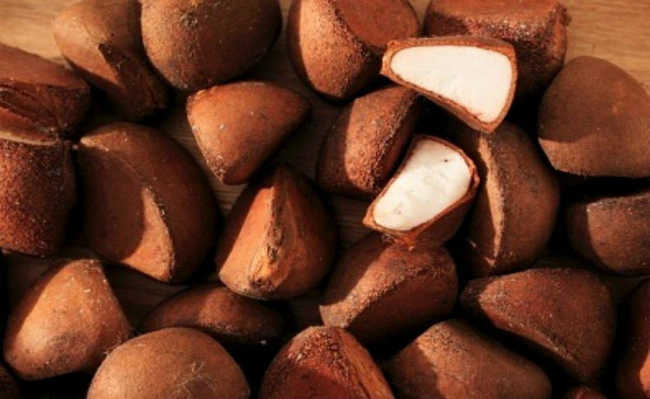Enamel: composition, hazards and sustainable alternatives
Know the main components of nail polishes, why they can be harmful and how to dispose of them

The art of coloring the jesma nails was known for over three thousand years, by the most different peoples, among them the Chinese, Italians and Japanese. It was, in most cases, a noble ritual, which marked socially distinct women, symbolizing power and wealth. Things have changed a little, but the item is extremely popular, making the economy go round, creating jobs and leveraging an industry that does not stop thinking about ways to innovate this technique so old.
However, if back there, the Chinese used beeswax, gelatin, flower petals and looked for natural pigments to give color to their nails; after World War I, enamel production became increasingly synthetic, and many of the raw materials used have already proven to be harmful to human health, such as formaldehyde or formaldehyde, even causing cancer and other ailments .
- What is formaldehyde and how to avoid its dangers
In Europe and the United States, many of these components have already been banned for sale, but not here in Brazil. Therefore, it is very important to know the dangerous components and the habit of carefully reading the nail polish labels to know their composition.
What are?
Technically speaking, nail polish is a cosmetic product composed of a mixture of solvents, thinners, film-forming agents, dyes and pigments (synthetic or natural) which, when applied to the surface of the nails, form a glossy plastic film by the evaporation of solvents, creating a layer whose main purpose is to color the nails.
The solvent serves to accelerate its drying and the thinner, as its name implies, is useful to dilute the mixture, which is plastic.
In addition to these basic components, the industry has been seeking to add greater functionality to enamel, adding additives, such as vitamins, in order to strengthen the nails or even using them as medicines against diseases present in them.
- What do nails say about your health?
Composition of enamels
The enamel composition is basically 85% solvents and the remaining 15% resins, plasticizers and other enamel components. Below, we present the most significant among them, their functions and harm caused, according to each class: solvents, resins, plasticizers and dyes (the sources of information are in the titles).
1. Solvents
They are substances capable of dispersing others (the solutes) in their environment, thus forming a solution.- Ethyl or butyl acetate: has a toxic effect in the aquatic environment.
- Toluene: is a proven carcinogenic diluent that can cause skin irritations, such as redness, pain and dryness, in addition to damage to the central nervous system, kidneys and liver by repeated or prolonged exposure. It is also toxic to the aquatic environment;
- Isopropyl alcohol: it can cause allergy in direct contact with the skin and harm fauna, flora and aquatic environments, and, when poured into the soil, it can partly percolate (cross the soil) and reach the water table, contaminating it.
- Dibutylphthalate: High potential to affect some aquatic organisms and cause skin irritation.
- Formaldehyde or formaldehyde: also used as a sterilizer, the product can be absorbed via inhalation or by contact with the skin, with a high potential for local irritation and may cause cancer.
2. Resins
They are polymers (plastics) responsible for the characteristics of the film after drying, such as gloss and physical properties.- Nitrocellulose: is a resin formed by a mixture of organic solvents and additives and is responsible for the adhesion of the enamel on the nails. Harmful by inhalation and dermal contact, it can cause contact dermatitis, it comes from renewable sources, such as wood and cotton.
3. Plasticizers
They help to maintain the malleability of the formed film, preventing the formation of cracks.- Camphor: it is a natural product obtained from the leaves of the camphor medicinal plant, it is widely used as a plasticizer for nitrocellulose.
- Ethylene copolymer: guarantees the stability of the formed film, taking care not to crumble.
- Polymethylacrylate: has the function of joining the other ingredients.
- Steralkonium from hectorite: when subjected to body temperature (around 36° C) it causes the solvents used, such as acetone, to evaporate.
- Polyurethane: has the function of integrating pigments, preventing them from accumulating and depositing at the bottom of the package.
4. Dyes and pigments
They are the components responsible for giving color to the enamel and can be from different organic or inorganic sources, such as rocks, ores, flowers, leaves or can even be produced synthetically.
Allergies
The main symptoms for those who are allergic to these products are: itching and redness in the nails, neck, eyes and mouth, which are regions that are often in contact with the hands. Peeling and dryness are also common in these users.
By far, nail polishes are the cosmetics that most cause allergies to consumers, precisely because of their composition, with 95% of allergy sufferers having symptoms due to toluene and the other 5% due to the presence of formaldehyde, both used on a large scale, mainly thanks to at low cost, in addition to dibutylphthalate (DPS). These three components are those taken from formulas called hypoallergenic 3 free - which does not mean that they are harmless to health.
Unfortunately, more than just apparent local allergic skin reactions, these components are extremely dangerous to human health, and many of them can lead to cancer and other ailments. So it is necessary to be aware if the formula contains formaldehyde, dibutylphthalate and toluene.
In this case, there is no other solution than to suspend the use of the substance causing the allergy. And it doesn't work to space out the use and use it again later, as the body has an immunological memory, reacting promptly as soon as it detects the component causing the reaction. It is essential to seek and guide a dermatologist in these cases and whenever there are doubts about the product and its side effects.
Environment and correct way of disposing of packaging
Enamel is not recyclable and, if released into the environment directly, it can contaminate water bodies and the soil; if incinerated, it produces toxic fumes, harming the entire ecosystem.
Glass packaging is recyclable, but for this it is necessary that the entire content is removed from the bottle. To do this, drain on a newsprint as much as possible and, for what is left at the bottom of the glass, add nail polish remover . Shake the bottle and, when the nail polish has completely dissolved, pour it back onto the newspaper. Coarser residue that accumulates on the threaded glass nozzle can be removed by wiping with a soaked cotton. When the glass packaging is completely clean, after these steps, it can now be correctly disposed of for recycling.
Never throw the enamel directly into drains, as it goes into the sewage collection network and thus can contaminate a large volume of water, making the sewage treatment system more difficult and expensive. Currently, everyone's water is already contaminated by microplastic, and certainly, the plastic present in enamels can be one of the polluting sources. To learn more about this topic, check out the article "There are microplastics in salt, food, air and water".
Less harmful would be if there were conscious reverse logistics on the part of manufacturers, but unfortunately this is not the case in Brazil. Foreign nail polish brand Zoya has the initiative of exchanging used nail polishes for new colors of its brand, in order to recycle the glass, every year, on Earth Day. In this sense, greater pressure from Brazilian consumers for a similar initiative may be effective. The ideal would be the creation of legislation that regulates this obligation on the part of the industry to collect and give the proper destination to each component.
natural alternatives
Given all this, it is difficult to continue using nail polishes and have a clear conscience. What a lot of people do is ban this item from the wardrobe, especially considering that the recommendation of dermatologists is to leave the nails natural, with cuticles, without foundation or nail polish, so that they can breathe, thus avoiding the appearance of localized diseases.
But as we are not all the same, there are those who do not want to give up nail polish. In these cases, the news is good: there are enamel brands that make the product safer to use.
And you can also make your own nail polish at home. Check out a very simple recipe:homemade enamel
- 1 tablespoon of oil.
- Half a tablespoon of powdered white clay.
- Powdered food (very fine) in the color you prefer (it can be strawberry powder, beetroot powder, turmeric powder, parsley powder, whatever you like)
- Mica powder (the rock), if you want shine. Avoid glitter, as it is microplastic and is highly harmful to humans and animals. See more about this subject in the article "Glitter is unsustainable: understand and learn about alternatives".
Method of preparation:
- Mix the oil and powdered clay until it becomes a homogeneous mass. And then add the food powder, stirring until the paste is very smooth.
- Put the mixture in a container and that's it, just use it. The only downside is that this type of nail polish takes longer to dry.
Other valuable tips
Always take care in hydrating the nails and cuticles, and a great natural suggestion are the shea and cupuaçu butters, which promote this hydration intensely; and vegetable oils, mainly grape seed oil. You can find vegetable oils at eCycle store. Learn about other tips in the articles: "How to make homemade nail polish remover" and "How to remove nail polish without acetone".










